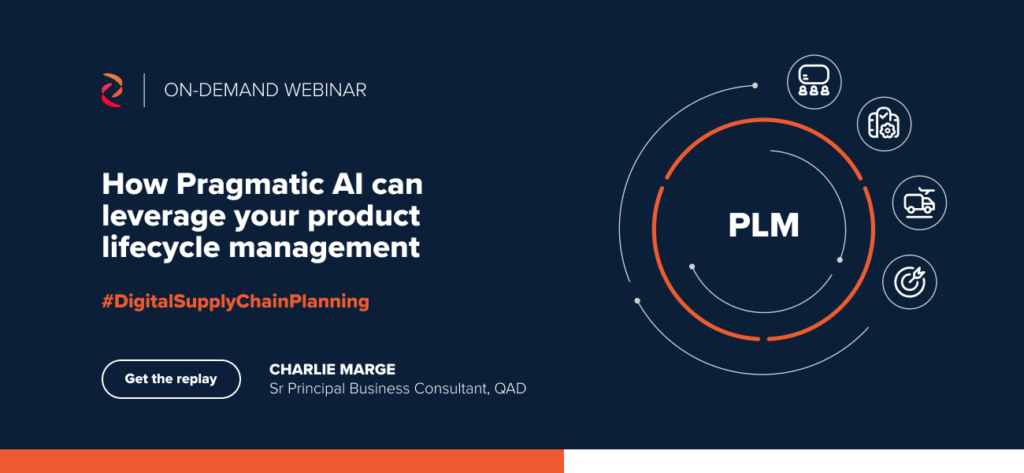You’ve been given the greenlight to select and implement an ERP solution to streamline your manufacturing but the failure points for implementation and execution are stacked against you. There’s a better approach to deployment and we’re here to share it.
Why Does ERP Fail?
21% of ERP implementations fail to go live. 55% are over budget and 75% take longer to implement than planned. So it’s worth taking a step back to ask why ERP fails before beginning the selection process.
Failed ERP projects often are the result of ERP vendors committing “The Three Sins of ERP in Manufacturing” These include:
- A lack of a continuous improvement approach
- A singular concentration on software
- Assuming the job is over when the solution is deployed
These sins all are associated with a misguided focus on ERP features.
MYOPIA
Devolving to a feature focus
Companies look to achieve better business outcomes. ERP is one of several ways to improve outcomes. As the ERP project gets passed down in the organisation for vendor selection and implementation, the ERP “MEANS” for solving the problem can devolve into the “ENDS,” meaning that someone in the IT department believes the goal is to get ERP installed.
It is this translation of “ERP as a means for improving business outcomes” to “ERP as an IT Project” that often leads to failure. Too many ERP projects end up concentrating on what the software can do versus what you need it to do and, more importantly, why you need it. Even if you recognise the need to adopt a continuous improvement approach to optimise your processes and try to align your ERP, it is unlikely you will be able to do so.
Most ERP systems are like pouring and setting concrete: they flow to meet today’s needs during design but once implemented, they harden in place making change extremely difficult. They simply were not built to quickly adapt to change.
Beyond just the ERP software, agility is also impacted by the services and customer engagement technique of the ERP vendor. Vendors should assist in identifying business issues and the underlying processes that impact those issues and work to align the people, process, and underlying technology. Not all vendors do this.
Means ≠ Ends
THE DEATH CYCLE OF ERP

Failing through good intentions
Failure starts with making reasonable changes in processes that the business needs. Changes in process should be reflected by changes in the supporting ERP. Many ERP systems are difficult to modify. To avoid this difficulty, workarounds and manual processes are adopted.
Over time the gap continues to grow between your processes and the ERP system. This leads to errors and no single or real time version of the truth. This results in users no longer trusting the data and the system. Manufacturers then become less responsive to customer needs and requests.
FOR EXAMPLE: Customer: Can I add 100 widgets to my existing order and maintain the same ship date?
Manufacturer: I don’t know. I need to check with operations and get back to you later.
Blame is then placed on the ERP system. Then, to solve the ERP system problem, another ERP selection is kicked off and the whole cycle repeats as you can see in our illustration.
“Nothing is more permanent than a temporary hack.”
A QAD LEADERSHIP EBOOK
BORN TO FAIL
Failing before starting
The way we purchase ERP software can lead to poor solution design. Selection committees seldom have high-level consolidated goals tied to the company’s strategy and objectives, like profit, revenue growth or cost reductions, on which to base the selection. Without a clear set of business-related goals, software selection committee members rightfully focus on the individual departmental or functional goals they are incentivised to achieve.
The problem here is the individual goals are often in conflict. For example:
The VP of operations wants to increase the length of production runs to reduce manufacturing costs. But this requires more inventory.
The VP of sales is fine with more inventory to improve customer service but wants it across more product lines.
Finance wants less inventory to reduce carrying costs.
Trying to optimise for each goal individually prevents optimisation of the company’s goals by rejecting reasonable tradeoffs when viewed at the company strategy level.
Similarly, the silos make it difficult to optimise processes that are inherently cross-functional, as no one owns the end-to-end process and again individual goals come into conflict.
UNFAILING
A business focused approach
At a high level, you need to answer why you are searching for an ERP solution. Optimising for the goals and associated key performance indicator metrics of individual stakeholders can lead to a suboptimal solution for the company, as measured by its strategic goals. Ultimately, ERP should be purchased as one piece of a solution to support your overarching business strategy. You should consider the following when planning:
- A focus on people and process will support your desired outcomes.
- The market is constantly changing so a continuous improvement approach is required to ensure your solution grows and pivots to and stays constantly aligned with any goal changes.
- Outcomes measurement so that you can assess the alignment between your ERP and your business strategy. It can also act as a diagnostic for areas of improvement.
This business approach to ERP leads to a lower-cost and lower-risk phased project focusing on achieving enterprise wide business outcomes through process review and business transformation where needed, backed by a rational set of software features.
SUMMARY
A business focused approach
Since the only constant is change, you need a partner who can help over the long term to ensure this alignment remains strong as the market evolves. An ERP system that is flexible after implementation to support process changes that come out of a continuous improvement approach is required. Following this approach can counteract the “Three Sins of ERP” perpetrated by many ERP vendors and refocus your selection on what truly matters to you: your customers and your products.




